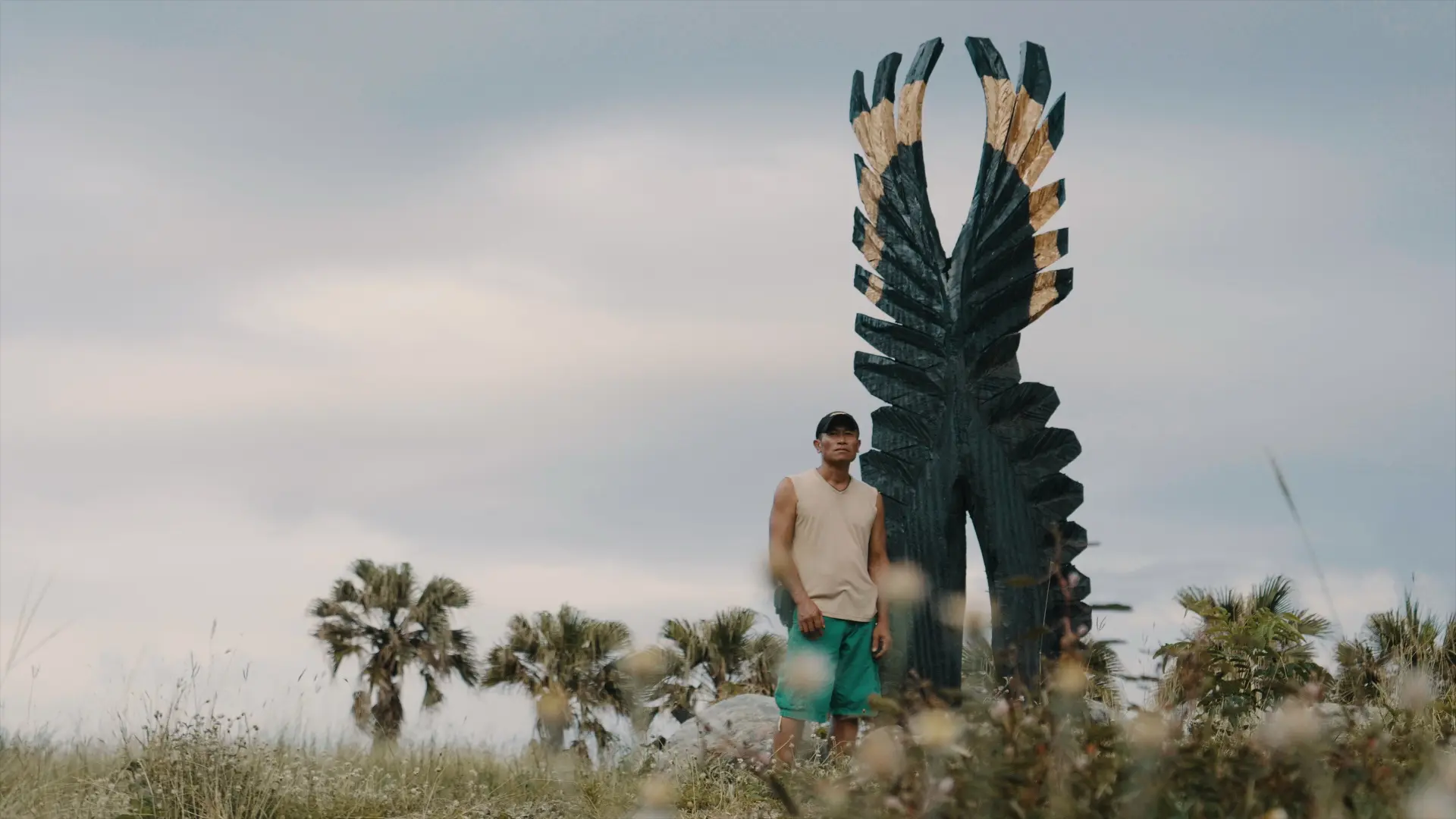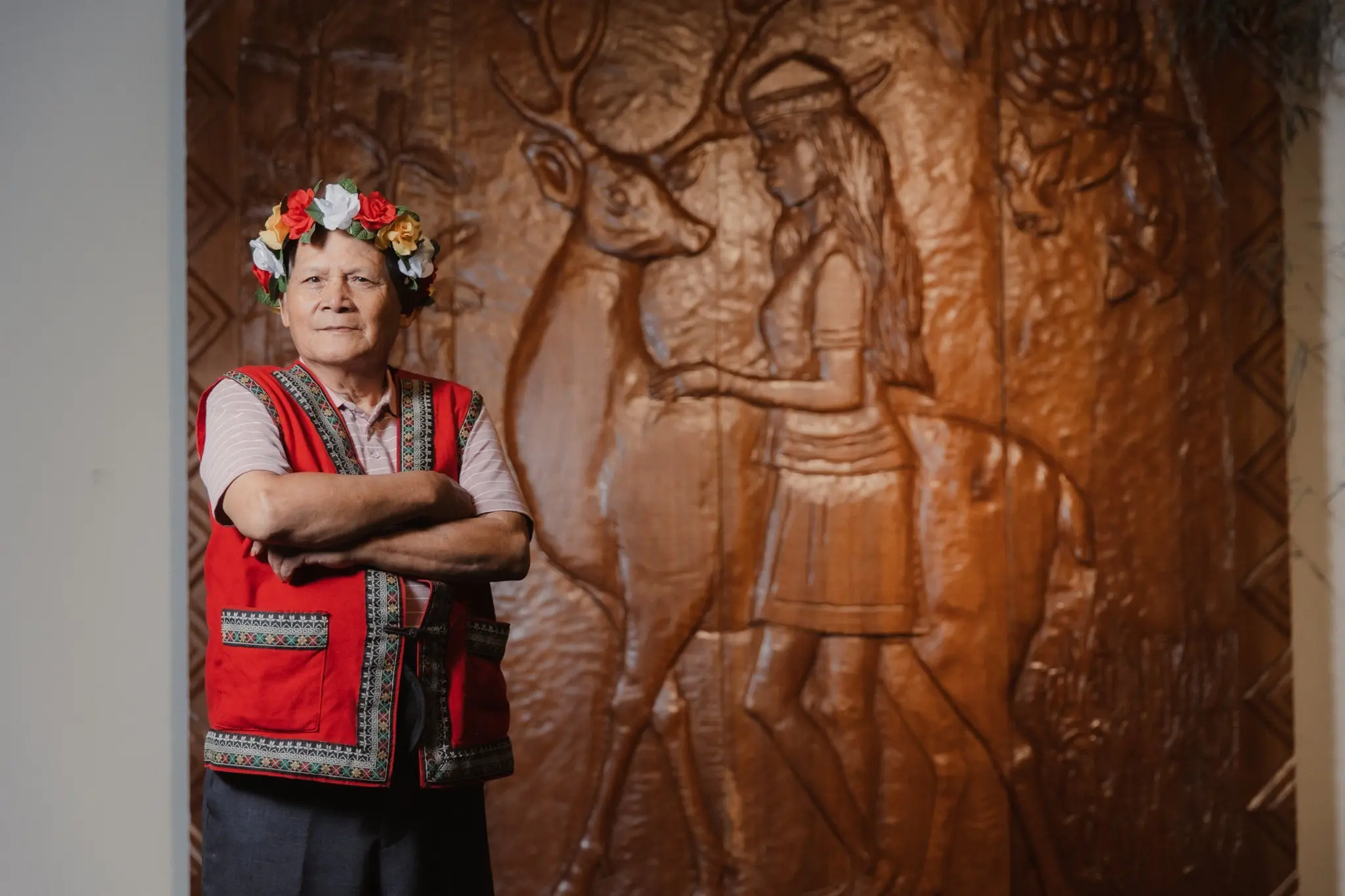Taitung County is located on Taiwan’s east coast, an important hub of Austronesian culture, which has roots stretching back to ancient times. The area’s various traditional crafts, most especially woodcarving, embody the wisdom local Indigenous tribes have collected over time. Woodcarvings not only reflect the tribespeople’s respect for nature, they also serve as testaments to a deep connection with the land that dates back centuries.

(Photo credit: IG@christina_yihsuan)
The origins of this woodcarving heritage can be traced back to ancient times when Indigenous people would carve decorations on everyday items, such as farming and household tools. With the changing times, contemporary attitudes towards art, which place importance on an individual’s vision and style, gradually replaced traditional and practical woodcarving. Despite this, no matter how this art form has changed, woodcarving will always remain an important medium for Indigenous people to connect with nature.
In recent years, many artists have started to collect driftwood from nature as a material for their work. This driftwood, which has been weathered by the elements, has vivid and dynamic textures that express a deep connection to nature. Artists treat these natural materials with sincere respect as carving gives the driftwood a second life. By transforming driftwood into various types of sculpture, these carvings poetically represent the interaction between people and nature.

(Photo credit: Taitung County Government)
For instance, Amis woodcarver Siki Sufin’s work “What’s Wrong World” is a classic example. Sufin used driftwood to carve out a dialogue between people and nature, and to remind us that technological progress can destroy the environment. Indigenous elders have thus warned posterity, “Everything you have taken from nature will one day be returned to nature!” This saying reminds us that we’ve been temporarily blessed with nature’s gifts. However, people must understand to respect and protect nature because its blessings aren’t permanent.

(Photo credit: 臺灣原住民族當代藝術)
Haku, another seasoned artist from the Beinan tribe, also records Indigenous life through woodcarving. Haku has spent a lot of time in Indigenous neighborhoods observing the posture of oxen, which has helped him carve interesting sculptures of these animals. The lines in his sculptures are rough but full of energy. These pieces don’t focus on copying outwardly forms, but rather transmitting an authentic feeling. In 1998, Haku received a government grant to establish a woodcarving artists village in his hometown of Jianhe. Thanks to Haku’s efforts, this traditional craft will be passed down for generations to come.

(Photo credit: 饒愛琴伊命工作室)
Imin Mavaliw, another Beinan artist that incorporates contemporary styles, uses a direct approach to restart the connection between tradition and nature. His creative process involves a type of “feeling”. By observing ocean and mountain landscapes and imagining the former homes of his ancestors, Mavaliw’s works are able to cultivate a deep connection to the land. Mavaliw embodies the core elements of Indigenous culture; connecting to the tribe by personally feeling and interacting with the natural environment.
In addition, contemporary Indigenous woodcarving has started to garner international attention. In 2024, a delegation of Indigenous people from Taitung County was invited to attend the opening ceremony of the 13th Festival of Pacific Arts. At the event, the delegation demonstrated unique Austronesian crafts and boatmaking skills while sharing the area’s abundant maritime culture with the world. In addition, the Taitung County Government and the Kimokeo Foundation of Hawaii exchanged gifts, which included carved wooden pillars and outrigger canoe stands. This event represented the transmission and strengthening of friendship between Austronesian cultures.
In addition to embodying artistic heritage, Indigenous woodcarving brings together collective tribal memories and connection to the land. Recently, young artists have given woodcarving new life and meaning. The blending of traditional crafts and contemporary views tell people about the stories of our land. In other words, a melody that narrates the interaction between nature and culture. Through the tests of time, this art form has retained its vigor and brilliance.
Learn more about and experience Austronesian culture.




